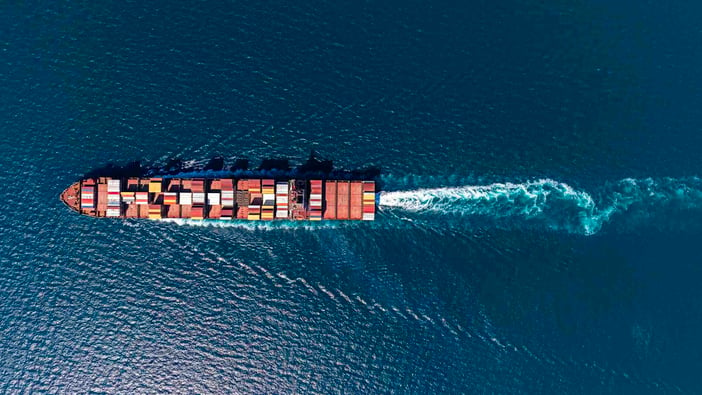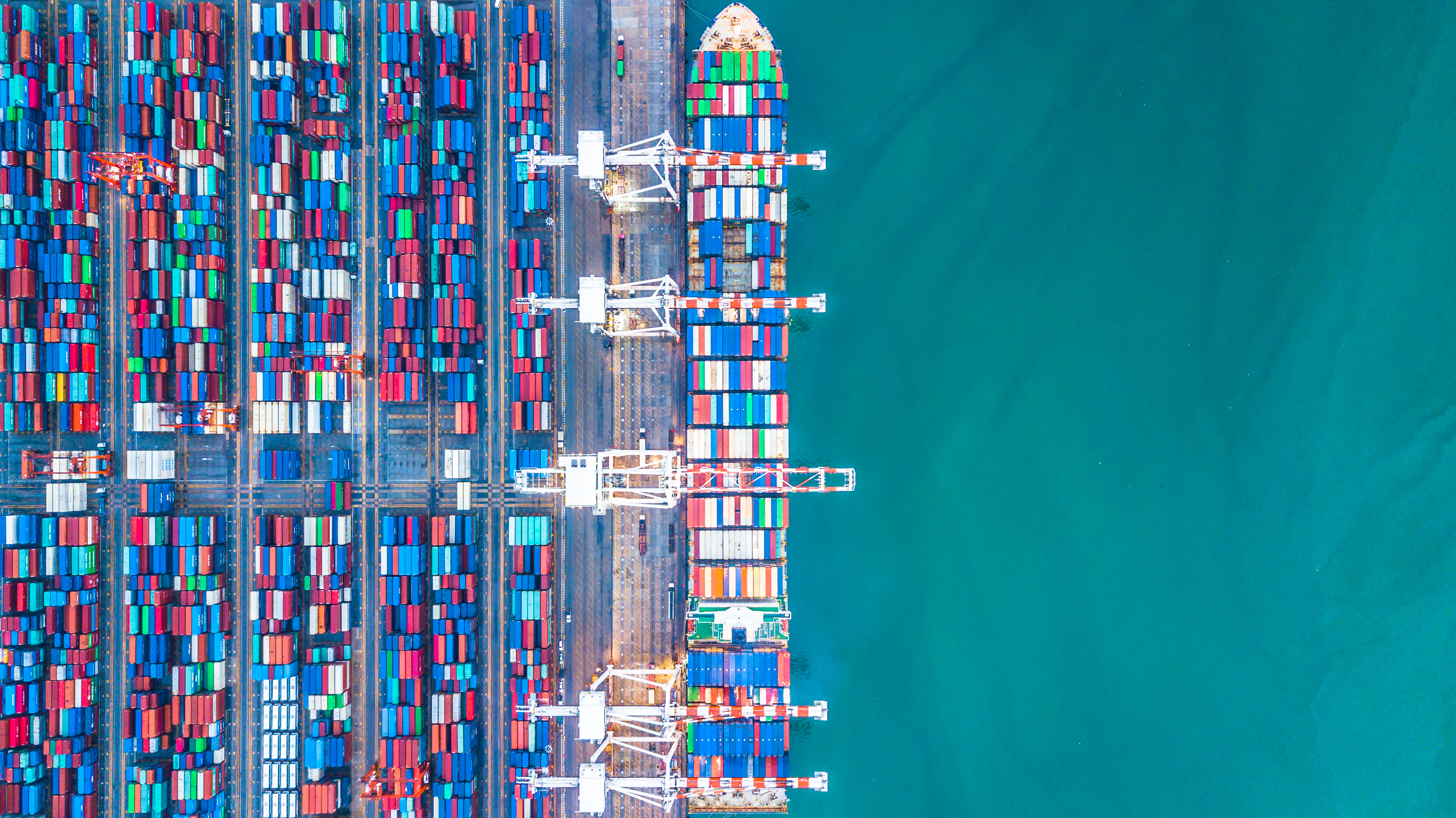
PIL and Wan Hai represent only a modest share of capacity on the container shipping market. They are only just behind the Top 10, however, and have a real desire to join them.
"Third party feeders" is the term used by the big Top 10 container shipping companies to refer to the smaller operators they sub-contract to transport cargo to and from secondary ports. Few shippers are aware of this but, under the terms of the transport contracts they conclude with the big shipping companies, the latter assure the service between the big hub ports but all connecting local links are assured by smaller third-party companies.
By way of example, the transportation of an FCL/FCL container from Haiphong to Le Havre can be covered by a single bill of lading (BL) in the form of a Direct BL or Through BL, even though the outward leg from Haiphong to Singapore is assured on the main carrier's behalf by a local operator, the name of which is unknown to the main carrier's client, as is the nature of its contract. The documentation destined for the final European client will be marked Haiphong/Le Havre and bear the name of the company operating the mother ship on the main leg of the contract, which is to say from Singapore to Le Havre.
Pacific International Lines (PIL) and Wan Hai, which mainly operate relatively short routes in the intra-Asian and Indo-Pacific markets, are long-standing operators of feeder services on these markets. They have nevertheless distanced themselves from their competitors in so far as they now find themselves contending with the Top 10 container shipping companies in terms of the capacity they bring to the market.

Source: Alphaliner (February 3, 2025)
What positions do these two companies occupy and what are the strategies they are following, as the new shipping alliances prepare the way for a reconfiguration of the container shipping market? Here, we will review the different parameters which can enable us to better understand the positions and strategies of the two groups.
Pacific International Lines (PIL)
Founded in 1967, Singapore-based PIL faced serious financial difficulties in 2019, like many of its fellow operators. A well-established old family firm which has an excellent reputation, Singaporean sovereign fund Temasek came to its aid with the financial support it needed to reorganise. To improve its performance, PIL called in a leading figure in the container shipping sector. Lars Kastrup, who had previously worked for Maersk and CMA CGM, joined PIL as a consultant in July 2020. He went on to become co-president and executive director and, finally, in July 2022, chief executive officer.
PIL has a client portfolio which is fairly equally divided between the big shipping companies, which use it as a sub-contractor on routes covered by their own bills of lading, and a direct clientele, composed of forwarders and big shippers (BCOs -beneficial cargo owners). It is present, therefore, on all segments of the greater regional market. The scope of its activities go beyond the regional sphere, however, since PIL is also active in Australia and Africa, where it competes directly with the Top 5 in these two markets.
Reflecting its new ambitions, moreover, the company is in the process of integrating its marketing network with the aim of operating under its own name where it is pertinent do do so.
Strong points
- The high organic density of its service network which is well adapted to current conditions.
- A wide-ranging customer portfolio which includes shipping companies and direct shippers.
- Professional staff who are loyal and keen to meet customers' needs.
- A well-filled order book for small and medium-sized ships.
- A fleet renewal programme in keeping with environmental constraints.
- A solid position on the fast-growing Indo-Pacific market.
- A service network well suited to the development of cargo flows within the BRICS alliance and appreciated by customers.
- High quality fleet and crew management standards.
- A strongly independent position.
Weak points
- Some of its major clients, such as MSC and CMA CGM, are looking to bring their feedering activities back in house, which would enable them to do without PIL's services.
- PIL is still little known among Western shippers.
- PIL could soon run into critical size problems, in the sense that it would no longer be completely regional and yet, at the same time, would not be global. This could make it a takeover prey.
PIL only accounts for 1.2% of global capacity but could serve as an interesting alternative to the bigger companies in certain tender calls.
Wan Hai
Founded in 1965 with mainly Japanese capital, it is the smallest of the three Taiwanese shipping companies, alongside Evergreen and Yang Ming. It offers more than 60 services in the intra-Asian market and, like PIL, owes its success to a dense, mainly organic service network, serving the main Asian ports with small ships. Like PIL, it also offers some long-distance services to Latin America.
In an indication of its wish to boost its cargo volumes, Wan Hai does not give its ships names, just numbers. This is not usual in the shipping business, even if it does simplify the paper work. Wan Hai makes a lot of short daily, even half-day voyages, using small vessels which are constantly in operation. This explains its need for simplicity and efficiency.
Currently, it is engaged in a sort of competition with fellow Taiwanese company Yang Ming, which it would like to replace in the container shipping Top 10 fleet capacity listings.
It has launched an ambitious fleet expansion plan. In August, it signed a letter of intent with CSBC Corporation for the construction of 12 8,000 TEU ethanol dual fuel vessels, with another four vessels on option. It also concluded a similar preliminary agreement with South Korea's HD Hyundai Samho for four other 8,700 TEU vessels and, in October, announced that it was placing a firm order for four 16,000 TEU dual-fuel ethanol post-panamax vessels. Compared to PIL, Wan Hai is ready, therefore, to make a serious bid to join the deep-sea shipping community, using ships of more than 10,000 TEU, which will be ready to go into service shortly.
This strategy immediately creates another dilemma for Wan Hai. Should it try to go into the deep-sea market alone or with others?
The first option looks to be counter-intuitive and not very pertinent, especially if there is a reversal of the market trend in 2025. There will only be negative effects to absorb. On the other hand, its recent announcement of a specific, bilateral transpacific partnership with ONE, outside the Premier Alliance, high capacity, offers it a good opportunity to gain experience in high capacity, long-haul shipping. The new joint service is due to be launched in February, although the new mini-alliance still needs to be approved by the US Federal Maritime Commission…which has not yet given its approval to the Premier Alliance, including ONE, HMM and Yang Ming. Another concern is that ONE risks finding itself having to make difficult choices between its two Taiwanese partners, one of which is in the Premier Alliance and the other not.
Strong points
- A solid company which is well established on the markets it serves.
- A position, like PIL, at the heart of the fast-growing Indo-Pacific zone.
- An agreement with Japan's ONE group, a close American ally, which could help it to move up into the Top 10.
- A long-standing presence in China's dynamic coastal belt.
Weak points
- With a culture currently based on sub-contracting, it needs to build up its big company know-how.
- It currently lacks an agency network in the West.
- It risks running into intra-Taiwanese friction with Yang Ming.
Wan Hai is clearly better placed than PIL to move into the Top 10 but the battle to achieve this will need to be won onshore. Fleet development will not be the most difficult part of the expansion effort it is looking to make.
Already in 2023, PIL and Wan Hai were thinking about joining forces to create a joint transoceanic service to Europe. Their desire to join the big league is not a new one, therefore. Today, however, they are more interested in the transpacific market. It remains to be seen now to what extent the Chinese and American competition authorities will be ready to accept the arrival of new services.

Jérôme de Ricqlès
Shipping expert
Our latest articles
-
Subscriber 2 min 19/12/2025Lire l'article -
Container shipping in 2025
Lire l'article -
Air cargo: the rerouting of flows is confirmed
Lire l'article


